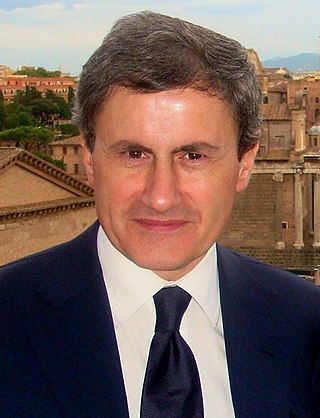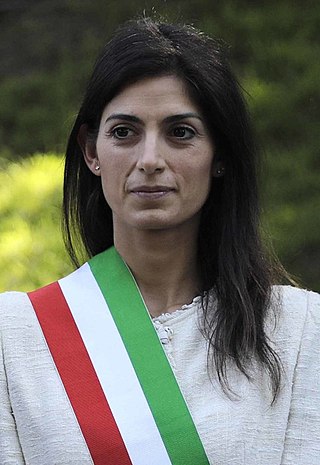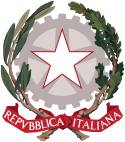Voting System
All mayoral elections in Italy in cities with a population higher than 15,000 use the same system. Under this system voters express a direct choice for the mayor or an indirect choice voting for one of the parties of the candidate's coalition. If no candidate receives a majority of votes, the top two candidates go to a second round after two weeks. The coalition of the elected mayor is guaranteed a majority of seats in the council with the attribution of extra seats.
The City Council is elected at the same time as the mayor. Voters can vote for a list of candidates and can express up to two preferences for candidates of said list. In case of two preferences, they must be given to candidates of both genders. Seats are the attributed to parties proportionally, and for each party the candidates with the highest number of preferences are elected.

The 2011 Italian local elections were held on 15–16 May, with a second round on 29–30 May. In Italy, direct elections were held in all 1,177 municipalities and 11 provinces: in each municipality (comune) were chosen mayor and members of the City Council, in each province were chosen president and members of the Provincial Council. Of the 1,177 municipalities, 30 were provincial capital municipalities and only 105 had a population higher than 15,000 inhabitants.

The 2010 Italian local elections were held on different dates; most on 29–30 March concurrently with the Regional elections.

Snap municipal elections were held in Rome on 13–14 and 27–28 April 2008 to elect the Mayor of Rome and 60 members of the City Council, as well as the nineteen presidents and more than 400 councillors of the 19 municipi in which the municipality was divided. The first round of the elections occurred on the same dates of the national general election.

The 2012 Italian local elections were held on 6–7 May, with a second round on 20–21 May. In Italy, direct elections were held in 948 municipalities: in each municipality (comune) were chosen mayor and members of the City Council. Of the 948 municipalities, 28 were provincial capitals and only 176 had a population higher than 15,000 inhabitants.

The 2013 Italian local elections were held on different dates; most on 26–27 May, with a second round on 9–10 June. In Italy, direct elections were held in 720 municipalities: in each municipality (comune) were chosen mayor and members of the City Council. Of the 720 municipalities, 20 were provincial capitals and only 171 had a population higher than 15,000 inhabitants.

The 2015 Italian local elections were to be held on 31 May, with a second round on 14 June, concurrently with the Regional elections. In Italy, direct elections were held in 1,063 municipalities: in each municipality (comune) were chosen mayor and members of the City Council. Of the 1,603 municipalities, 15 were provincial capitals and 120 had a population higher than 15,000 inhabitants.

Snap municipal elections were held in Rome on 5 and 19 June 2016, to elect the Mayor of Rome and 48 members of the City Council, as well as the fifteen presidents and more than 400 councillors of the 15 municipi in which the municipality is divided.

The 2016 Italian local elections were held on 5 June, with a run-off, where necessary if a candidate for Mayor obtained less than 50 percent of votes in the first round, held on 19 June.

The 2017 Italian local elections were held on Sunday 11 June. If necessary, a run-off vote was held on Sunday 25 June. The term of mayors and councils will last five years, unless an early election is triggered.

The 2018 Italian local elections were held on different dates; most on 10 June, with a second round on 24 June. In Italy, direct elections were held in 720 municipalities: in each comune were chosen mayor and members of the City Council. Of the 783 municipalities, 21 were provincial capitals and only 112 had a population higher than 15,000 inhabitants.

The 2019 Italian local elections will be held on different dates; most on 26 May 2019, together with the 2019 European election, with a second round on 9 June. Direct elections will be held in 3,843 out of 7,918 municipalities; in each of these, mayor and members of the City Council are going to be elected. Of the 3,841 municipalities, 30 are provincial capitals.

The 2020 Italian local elections were held on different dates; they were originally scheduled to take place in May 2020, together with the 2020 regional elections, with a second round on June, but they were delayed on 20 and 21 September with a second round on 4 and 5 October due to the coronavirus pandemic in Italy. Direct elections were held in 1,172 out of 7,904 municipalities; in each of these, the mayor and the members of the City Council are going to be elected. Of the 1,172 municipalities, 18 are provincial capitals.

The 2022 Italian local elections were held in various Italian local communities on 12 June 2022, with a run-off round on 26 June. Local elections in Trentino-Alto Adige/Südtirol were held on 15 May, with a second ballot on 29 May, while local elections in Aosta Valley on 29 May, with a second ballot on 12 June. Elections took place in 980 out of 7,904 municipalities, 26 of which were provincial capitals. Mayors and city councils were elected for the ordinary five-year terms, lasting till 2027.
This page is based on this
Wikipedia article Text is available under the
CC BY-SA 4.0 license; additional terms may apply.
Images, videos and audio are available under their respective licenses.



